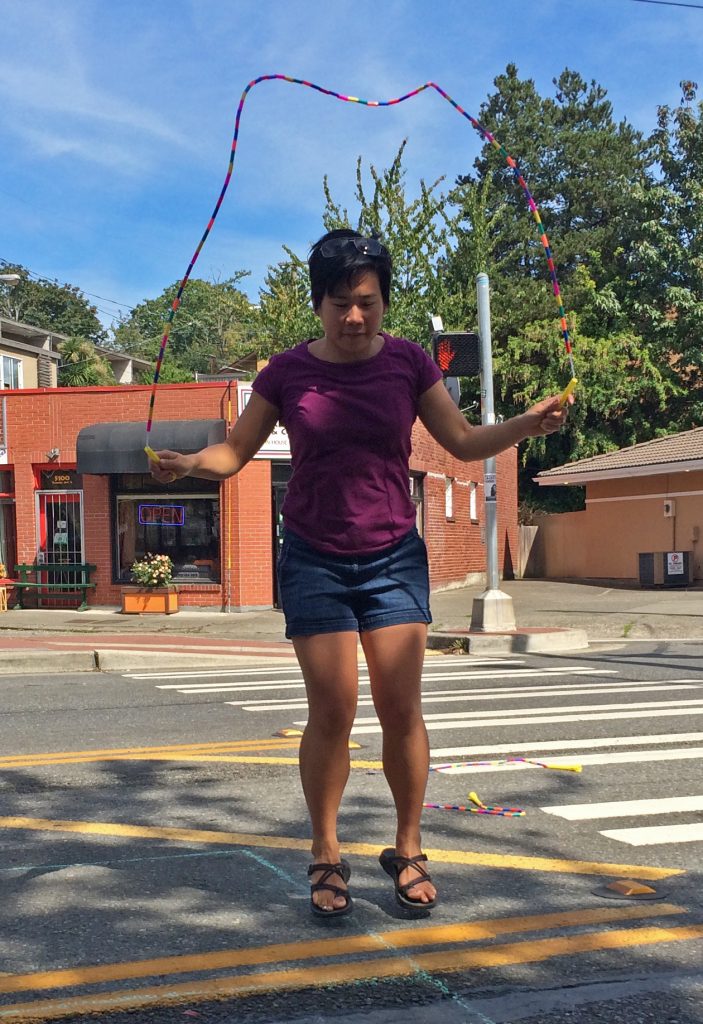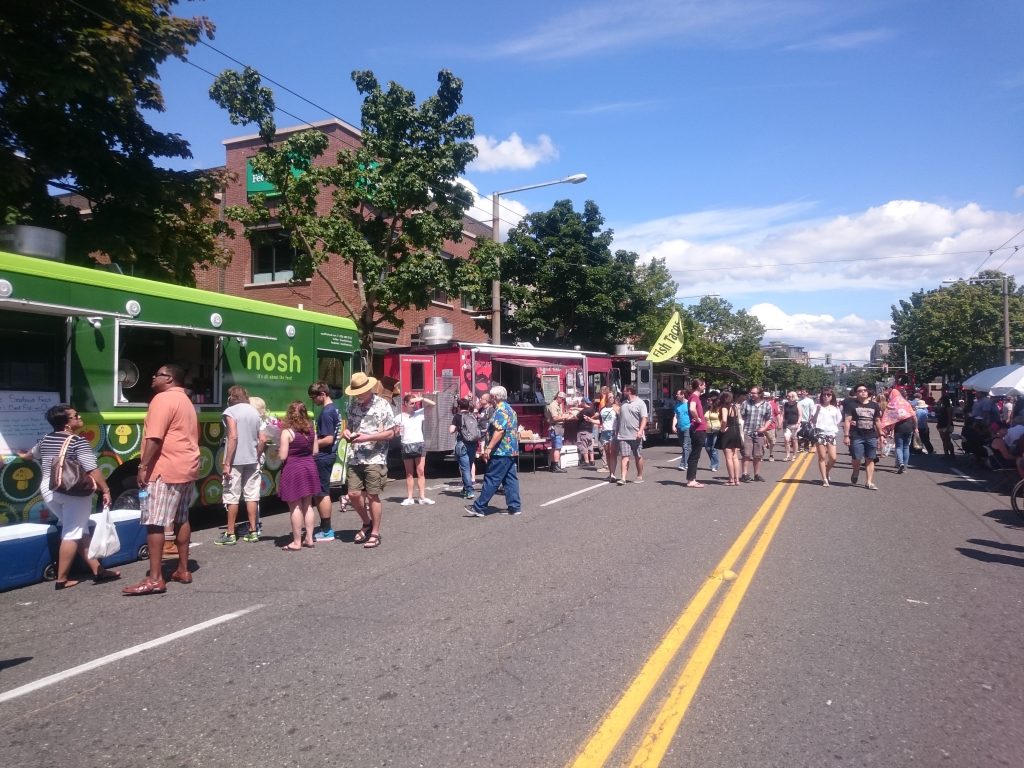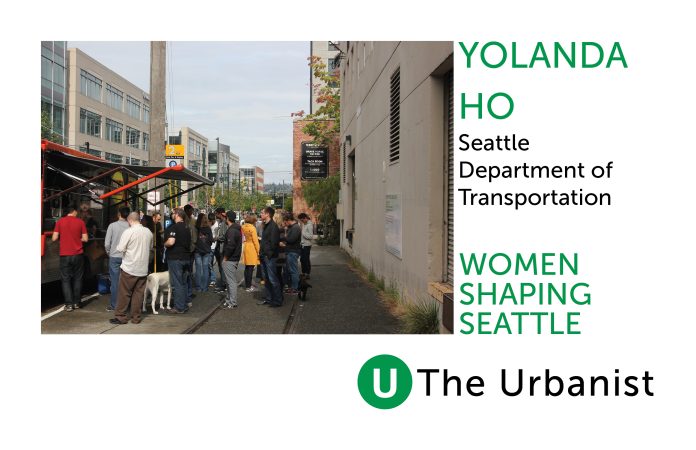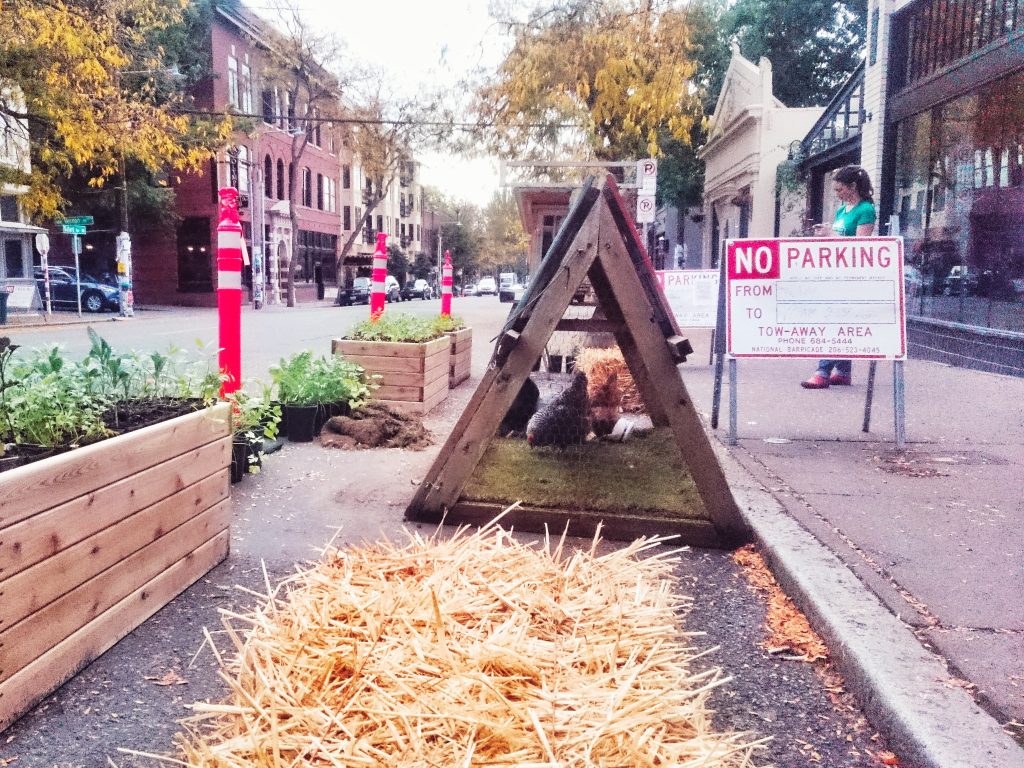Yolanda Ho works in the Public Space Management Program in the Seattle Department of Transportation’s (SDOT) Street Use Division. She helps to develop new, creative ideas for the use and activation of Seattle’s streets and sidewalks, ensuring that these are simultaneously vibrant, safe and accessible places. As part of our Women Shaping Seattle series exploring how women have changed and continue to change the design of the city, Yolanda shares some insight into her role at SDOT, her perspective of Seattle and how her previous work has influenced her approach to her work.
Drawing on this year’s Design Festival theme of “Design Change”, is there a particular place or project that you think illuminates the way women have changed the design of Seattle?
During my previous career as a landscape architect, I began to understand how policy determines what, where and how designers can create space. This led me to learn more about the forces that shape our built environment, including development economics, redlining and gentrification. Seattle’s Equitable Development Initiative, led by Nora Liu (formerly in the Office of Planning and Community Development), analyzed the growth scenarios presented in the draft Seattle 2035 plan in terms of areas of opportunity as well as potential for gentrification and displacement. Based on the report’s findings, the City created an equitable development implementation plan, which identifies priority projects and systemic changes required to advance equity. In the long-term, I believe viewing planning through the lens of equity and incorporating the needs of those most at risk of displacement will positively impact the future development of our city.
What is your role at SDOT and what projects are you working on?
I work with the Public Space Management (PSM) Program in SDOT’s Street Use Division. PSM regulates use of the public right-of-way (mostly our streets and sidewalks), issuing permits for activities like sidewalk cafés, food trucks, neighborhood block parties and parklets. I’m part of the program development team, which explores new ideas for making our public spaces more vibrant while still ensuring the safety and mobility of pedestrians, cyclists and cars. As a relatively new member of the team, I’ve been working on how we can increase outreach to underrepresented communities so that they are aware of our programs and see us as a resource for implementing their ideas for enhancing their neighborhoods.

Can you tell us a bit about SDOT’s initiatives to improve public space?
Our group was formed as a result of a task force convened in 2013 to comprehensively evaluate opportunities to create more vibrant public spaces. PSM’s program areas are a result of this process. Some ideas were driven by community interest, such as food trucks and street furniture, while others were inspired by successful efforts in other cities, like parklets and play streets. We continue to work on the program areas identified by the task force and are currently evaluating ways to make permitting less costly for uses that make public space more attractive and inviting, such as benches, lighting and planters.
What values, issues or interests are important to you and how do these inspire your work?
While I was still a landscape architect, I worked on a master development plan in Asia for a private developer. Looking at aerial photographs of the site, I saw dozens of rice fields and wondered what was going to happen to all the people if the developer constructed the seven golf courses and thousands of luxury homes we were envisioning. No one on the government side seemed concerned about the fate of the farmers; instead, the opportunity to attract foreign investment far outweighed protecting the rights of the public. This was incredibly frustrating, causing me to reevaluate my career and question whose side I wanted to be on. I believe that all members of our community should have a voice in planning and design, not just those with wealth and influence, and that the City has a responsibility to proactively engage with residents who might otherwise be excluded from traditional processes. In my role at SDOT, I endeavor to be as responsive, transparent and welcoming of ideas as possible.
What are the most exciting and most challenging aspects of your work?
I’m really excited to be a part of a group that’s tasked with implementing new ideas that will benefit residents, community groups and businesses. One of our big upcoming projects will be figuring out how to allow the sale of merchandise in the right-of-way. Currently, we only have vending permits for people to sell food or flowers, with a few exceptions. We’re in the very early stages of program development, which will require a great deal of public engagement and partnerships with other agencies as well as community groups. It’s a complicated process, but I think it will further the City’s goals to support and grow local businesses.

Are there any projects, issues or opportunities in Seattle on your radar which you hope to respond to in your work in the future?
I hope that PSM continues to contribute to the livability of Seattle. While increasing housing, affordable and otherwise, is rightly the focus of discussion, we also need to prioritize improvement of our public spaces. We are fortunate to be surrounded by gorgeous scenery, but our urban environment–what we experience everyday–should be attractive, active and enhance our quality of life.
Sarah is an urban planner and artist from Melbourne Australia, currently living in Seattle. She has contributed to diverse long-term projects addressing housing, transportation, community facilities, heritage and public spaces with extensive consultation with communities and other stakeholders. Her articles for The Urbanist focus on her passion for the design of sustainable, inviting and inclusive places, drawing on her research and experiences around the world.



